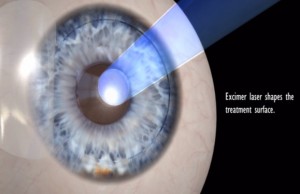Is LASIK safe in the long term?
For treatment of myopia up to -10, there are now several studies reporting good long term outcomes between 10-16 years post operatively, for both LASIK (Alio 2008) and PRK (which is surface laser treatment similar to LASEK) (Alio 2016, Guerin 2012, Rajan 2004). Similar long term safety data for treatment of hyperopia by PRK has also been reported (Dave 2016).
Bearing in mind that the laser technology used at the time of these surgeries was much less sophisticated than the state of the art lasers with multi-dimensional eye tracking and wavefront technology used today, these studies indicate that laser eye surgery is very safe long term, providing careful screening and exclusion of patients with an underlying tendency to develop ectasia (a condition of the cornea where it becomes thin and cone-shaped) has been carried out.
Safety is measured in terms of the percentage of eyes in which the best-corrected vision after surgery is worse than that which was present prior to the surgery. This percentage is between 1-3%, and lower in studies where newer lasers have been used.
How long does the effect of laser eye surgery last?
For myopia (short sight) with a low to moderate prescription (less than -6.0), the long term results are the best and the effects are likely to last for at least 20 years or more. In these patients, only natural age-related changes inside the eye due to
(1) presbyopia (weakening of the muscle for reading vision) and
(2) changes in the eye prescription due to development of early cataract from the age of 50 onwards, can lead to the need to wear glasses again.
For myopia (short sight) which is high prescription (greater than -6.0), the long term results are also excellent, but a phenomenon called “myopic regression” can occur, which leads to a low level of myopia (usually up to 2 dioptres) returning, sometimes towards the end of the first year after the surgery, or later. If myopic regression occurs and is causing symptoms of blurred vision (a small amount of regression does not cause symptoms), then providing there is enough thickness in the cornea, re-treatment of the small residual correction is often very successful. In presbyopic patients with up to 2 dioptres myopia due to myopic regression, this myopia can help them read without glasses. In these patients, re-treatment of myopic regression is not always necessary.
For hyperopia (long sight), a moderate amount of hyperopia can return between 1 and 16 years post-operatively, but vision unaided is still improved after 16 years (Dave 2016).
